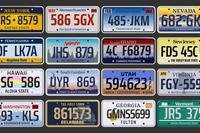As soon as you obtain orders promptly contact your servicing Transportation Office to schedule a counseling appointment. Your servicing Transportation Office is responsible for answering questions on travel options and moving arrangements, May through August is the peak time for relocations, the earlier you call for an appointment, and the more likely you are to get the dates requested.
The maximum weight that may be shipped or stored at government expense is limited to 18,000 pounds net weight. You're responsible for any excess weight. To estimate the weight of your household goods (HHG), multiply each room of furniture by 1,500 pounds. Don't forget to include items located in your garage, basement, etc.
Some overseas locations have a limited shipment allowance. For example, the maximum amount that may be shipped to Yokota, Japan is 4,500 pounds yet the total weight that may be shipped and stored is 18,000 pounds net weight. The servicing Transportation Office can provide information on those overseas locations with weight limitations.
Your household goods may be shipped using one of two methods:
- Have the government designate and pay for a commercial carrier using a government bill of lading (GBL).
- Arrange your own move using the Commuted Rate Schedule for Transportation and Storage of Household Goods (CRS).
In most cases, shipment of HHG will be handled using a Government Bill of Lading (GBL). Under this method you make arrangements through your local Transportation Office. A phone number and address will be provided to you at the time your travel authorization is finalized. You don't file a voucher with the paying travel office if you use this method. However, for tax purposes, you must provide a copy of the GBL if there is storage more than 30 days.
If you elect to personally move your HHG after GBL has been authorized, you'll be reimbursed for the actual expenses incurred (i.e., boxes, packing tape, rental truck, gas, etc.), up to the amount it would have cost had the shipment been made via GBL. Certified Weight Tickets must be obtained from the mover showing the weight both before and after the HHG are loaded. The weight tickets are necessary to show proof of the gross weight (total weight of goods loaded plus truck weight), tare weight (weight of truck without goods), and net weight (gross weight minus tare weight). An inventory of HHG and an itemized list of paid receipts are also required for proper reimbursement. The costs of renting a tow bar for a POV or insuring HHG aren't reimbursable.
If you choose to personally arrange your move, a cost comparison between the actual expense (GBL) and the commuted rate methods will be done using the Commuted Rate Schedule (CSR) for Transportation and Storage of Household Goods.
In the event the estimated cost under one method exceeds the estimated cost under the other method by more than $100, you'll be reimbursed up to the amount of the more economical method. When CRS is authorized you may choose to move the HHG yourself, or hire a commercial mover to do so. The method to be used must be stated in your PCS travel orders. Reimbursement is determined by the CRS as published by the General Services Administration.
To get more PCS tips or information, visit Military.com's PCS/Home Buying Guide.
Keep Up-to-Date for Your Next PCS
Get the inside information from those who know. Get PCS help and all the news and benefits information you need delivered straight to your inbox. Sign up for a free membership today.













